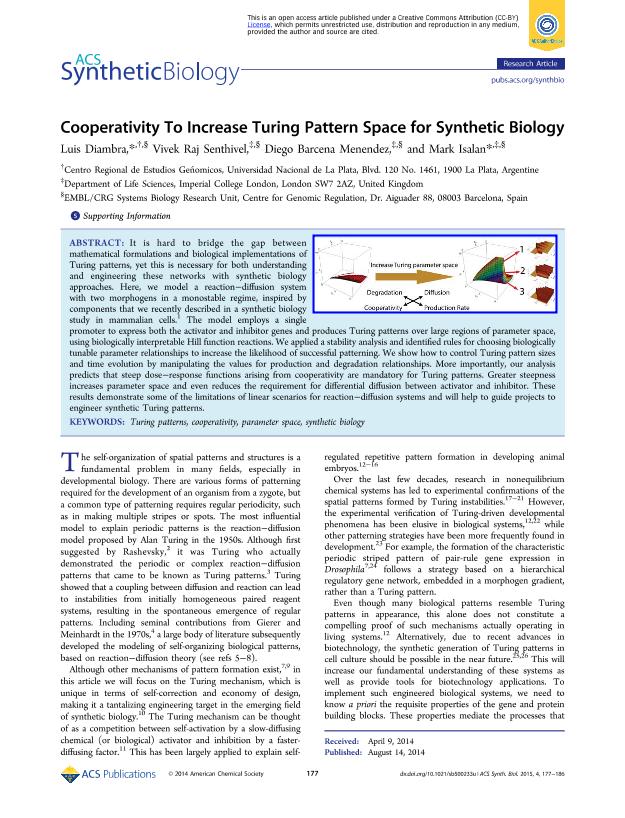Artículo
Cooperativity to increase Turing Pattern space for synthetic biology
Fecha de publicación:
08/2014
Editorial:
American Chemical Society
Revista:
ACS Synthetic Biology
e-ISSN:
2161-5063
Idioma:
Inglés
Tipo de recurso:
Artículo publicado
Clasificación temática:
Resumen
It is hard to bridge the gap between mathematical formulations and biological implementations of Turing patterns, yet this is necessary for both understanding and engineering these networks with synthetic biology approaches. Here, we model a reaction–diffusion system with two morphogens in a monostable regime, inspired by components that we recently described in a synthetic biology study in mammalian cells.1 The model employs a single promoter to express both the activator and inhibitor genes and produces Turing patterns over large regions of parameter space, using biologically interpretable Hill function reactions. We applied a stability analysis and identified rules for choosing biologically tunable parameter relationships to increase the likelihood of successful patterning. We show how to control Turing pattern sizes and time evolution by manipulating the values for production and degradation relationships. More importantly, our analysis predicts that steep dose–response functions arising from cooperativity are mandatory for Turing patterns. Greater steepness increases parameter space and even reduces the requirement for differential diffusion between activator and inhibitor. These results demonstrate some of the limitations of linear scenarios for reaction–diffusion systems and will help to guide projects to engineer synthetic Turing patterns.
Palabras clave:
Cooperativity
,
Parameter Space
,
Synthetic Biology
,
Turing Patterns
Archivos asociados
Licencia
Identificadores
Colecciones
Articulos(CCT - LA PLATA)
Articulos de CTRO.CIENTIFICO TECNOL.CONICET - LA PLATA
Articulos de CTRO.CIENTIFICO TECNOL.CONICET - LA PLATA
Citación
Diambra, Luis Anibal; Senthivel, Vivek Raj; Barcena Menendez, Diego; Isalan, Mark; Cooperativity to increase Turing Pattern space for synthetic biology; American Chemical Society; ACS Synthetic Biology; 4; 2; 8-2014; 177-186
Compartir
Altmétricas




